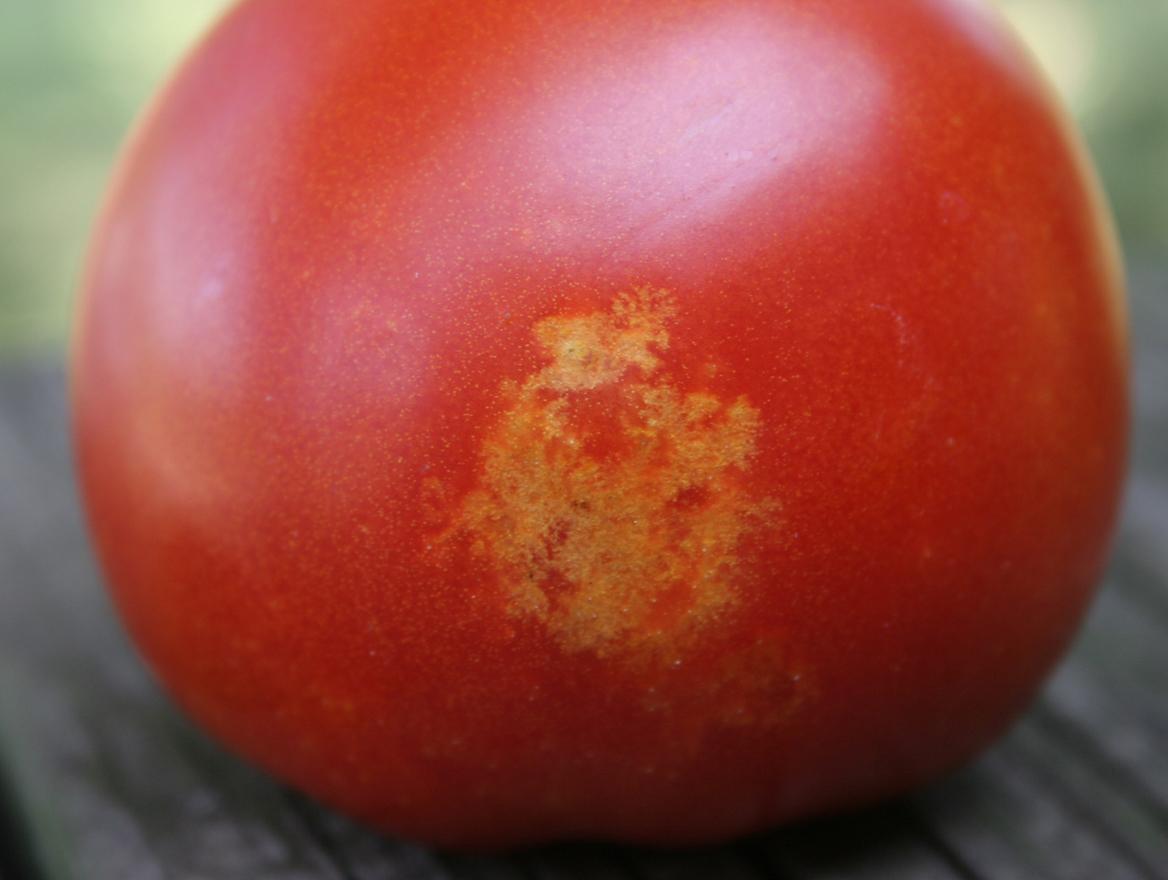Lack of Fruit & White Spots Tomatoes
go.ncsu.edu/readext?813992
en Español / em Português
El inglés es el idioma de control de esta página. En la medida en que haya algún conflicto entre la traducción al inglés y la traducción, el inglés prevalece.
Al hacer clic en el enlace de traducción se activa un servicio de traducción gratuito para convertir la página al español. Al igual que con cualquier traducción por Internet, la conversión no es sensible al contexto y puede que no traduzca el texto en su significado original. NC State Extension no garantiza la exactitud del texto traducido. Por favor, tenga en cuenta que algunas aplicaciones y/o servicios pueden no funcionar como se espera cuando se traducen.
Português
Inglês é o idioma de controle desta página. Na medida que haja algum conflito entre o texto original em Inglês e a tradução, o Inglês prevalece.
Ao clicar no link de tradução, um serviço gratuito de tradução será ativado para converter a página para o Português. Como em qualquer tradução pela internet, a conversão não é sensivel ao contexto e pode não ocorrer a tradução para o significado orginal. O serviço de Extensão da Carolina do Norte (NC State Extension) não garante a exatidão do texto traduzido. Por favor, observe que algumas funções ou serviços podem não funcionar como esperado após a tradução.
English
English is the controlling language of this page. To the extent there is any conflict between the English text and the translation, English controls.
Clicking on the translation link activates a free translation service to convert the page to Spanish. As with any Internet translation, the conversion is not context-sensitive and may not translate the text to its original meaning. NC State Extension does not guarantee the accuracy of the translated text. Please note that some applications and/or services may not function as expected when translated.
Collapse ▲When we have the stretches of high temperatures that we see each summer, we can experience problems with vegetable fruit set and quality. Tomatoes are one of the most common plants that I get questions about in the Extension Office.
Daytime temperatures over 90° F and night temperatures over 70° F reduce fruit set in tomatoes. Flowers die and drop due to lack of pollination or the pollen being non-viable. Once temperatures cool, fruit set will resume.
There are a couple of causes of white spots in the tomato fruit. One is weather related and that is internal white tissue that is only noticeable when the fruit is cut. The hard, white areas tend to be in the outer walls of the fruit, although it can also appear in the center of the fruit. High temperatures during the ripening period seem to trigger the symptoms. The darker red varieties are more resistant to this problem.
Another cause of white spots that are usually visible in the skin is damage from sucking insects – mostly stink bugs of some type. When they insert their proboscis into the fruit to feed, they inject an enzyme to

Credit: University of Kentucky
help break the fruit down, so they can easily suck the juices out. This enzyme causes the white spots. In my garden my major pest is a type of stinkbug called the Eastern Leaf-footed Bug. It gets its name from the “leaf-like” appendages on it rear legs. Just like a stink bug this insect feeds on fruits, and in my garden it is the tomatoes that suffer damage. You can handpick these pests and drop in soapy water or use an insecticidal soap. One of my co-workers was so disgusted by them that she took her leaf blower to them and blew them away!
In both cases of white spots in the tomatoes, the fruit is still edible, just cut those spots out.




